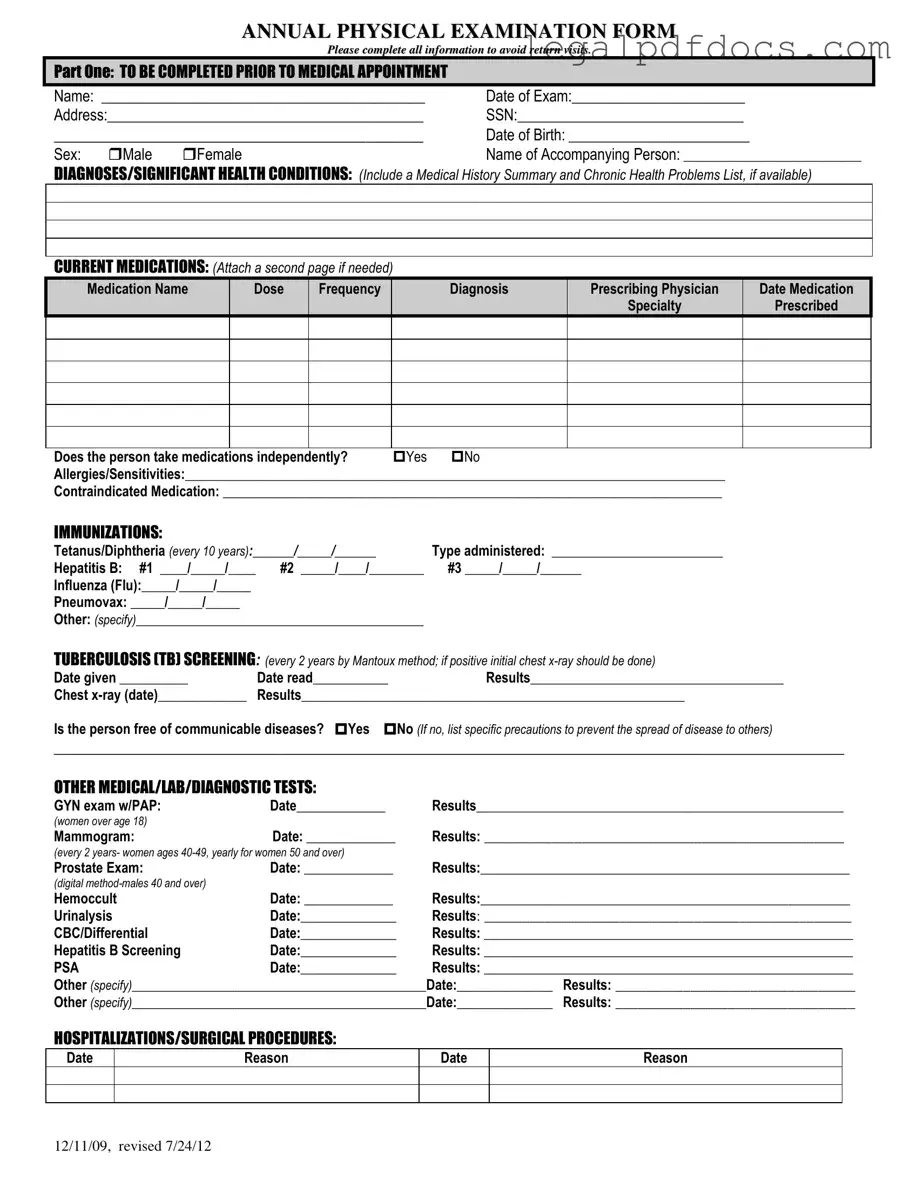The Annual Physical Examination form is a comprehensive document designed to gather essential health information from individuals prior to their medical appointments. This form includes various sections that require detailed personal information, such as the individual's name, date of birth, and social security number, along with a space for the name of an accompanying person. Medical history is crucial, so individuals must list any significant health conditions, current medications, and allergies. Immunization records are also required, detailing vaccinations such as Tetanus, Hepatitis B, and Influenza. Tuberculosis screening is another vital component, ensuring that any communicable diseases are identified and managed appropriately. The form further includes sections for general physical examination results, where vital signs and evaluations of various body systems are documented. Additional comments and recommendations for health maintenance, dietary considerations, and any limitations on activities provide a well-rounded view of the individual's health status. By completing this form accurately, patients can help ensure a more efficient and effective medical examination process.
